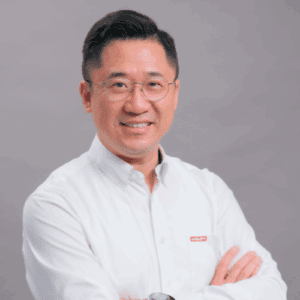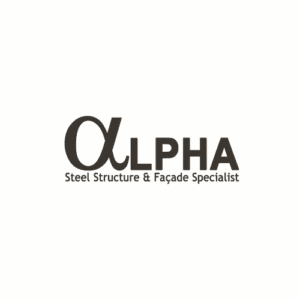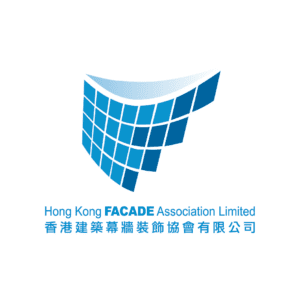Technological Innovations To Achieve a Net Zero Building Environment
12 Sep (Fri) Day 2 : 10:40 – 11:20
Buildings are the foundation of our communities, but their emissions are also driving the climate crisis. The building sector contributes nearly 40% of all global greenhouse gas emissions. To continue to thrive, society needs net zero buildings. A net zero building is simply a building that has no net carbon emissions during its construction and operation. Emissions are reduced and what’s leftover is balanced by renewable energy or carbon offsets. Innovative façade design is the key to achieve a net zero building such as incorporating BIPV panels in the façade design and consider adopting modular construction methods in lieu of traditional ones.
Now is the time to implement net zero carbon for buildings, both new and existing. Achieving net zero carbon will require us to transform how we design, build, and operate buildings of all types and scales.
Learnings
- Understanding Net-Zero Transition
- Science-Based Target for Buildings
- How to Deliver the Practice by Technological Developments
- Our Green Vision to Global Mission
Post-event Actions
- Follow Up with Contacts: Actively connect with fellow attendees and speakers via platforms like LinkedIn or email to solidify networking opportunities. This helps maintain relationships and opens doors for future collaborations.
- Share Knowledge: Summarize key insights, take notes, and share them with colleagues or peers through presentations, reports, or team meetings. This reinforces learning and benefits the broader organization.
- Provide Feedback: Offer constructive feedback to organizers through surveys or direct communication. This helps improve future events and shows engagement. Use tools like Google Forms for structured responses.
- Engage on Social Media: Post about the conference experience on platforms like Twitter or LinkedIn, using event hashtags to maintain visibility and continue discussions. Share quotes, photos, or key takeaways to stay connected with the event community.
Speakers

Moderator
Michael Leung
General Manager
Hilti


Michael Leung
Hilti
General Manager
Michael LEUNG
General Manager, Hilti (Hong Kong) Limited
Experienced Managing Director with a demonstrated history of working in the construction industry in Australia, Hong Kong, Macau and mainland China. Skilled in Sales, Engineering, Construction Technology, Customer Relationship Management (CRM), and Account Management. Strong business development professional graduated from Ivey Business School at Western University, Imperial College London and HKUST. Before joining Hilti, Michael is a chartered structural engineer who involved in commercial, educational and infrastructure projects.
My Sustainability Goals for 2025:
- Embodied carbon saving to be regulated in new building design
- More examples in solid waste reduction in construction by considering Circularity
- First structural timber building to be built in HK

Patrick Wong
Managing Director
South Star Glass Limited


Patrick Wong
South Star Glass Limited
Managing Director
Patrick Wong is a graduate of the Hong Kong Polytechnic University in Building Technology and Managment. During his studies, he demonstrated strong leadership as President of the Hong Kong Polytechnic Students’ Union (1984–1985) and Chairman of the Representative Council, Hong Kong Federation of Students (1985–1986).
After graduation, Patrick built a diverse project management portfolio, including the interior renovation of the Hong Kong Space Museum and leading large-scale construction projects in Mainland China as both planner and owner’s representative. He also gained valuable experience managing aluminum window and furniture manufacturing operations.
In 2000, Patrick founded South Star Glass Hong Kong Ltd., and in 2013, he expanded with GuangDong South Star Glass Ltd., establishing a reputation for delivering premium, innovative and sustainable glass solutions for projects in Hong Kong and overseas. Under his leadership, the company has earned numerous accolades, including the 2023 Green Building Award and repeated recognition in the HKGBC Retrofitting Guidebook. In 2024, South Star Glass received the “Best Stand” award at Sydney Build.
Patrick currently serves as a board member of the Hong Kong Facades Association and remains committed to advancing the glass and construction industry in Hong Kong and China.

Ir Dr. Dominic Yu
Principal
Alpha Consulting Limited


Ir Dr. Dominic Yu
Alpha Consulting Limited
Principal
Ir. Dr. Dominic Yu is a Research & Engineering based specialist in structural design and structuraluse of glass. He is the Principal of Alpha Consulting Limited, providing consultancy services on glass and facade engineering, non-linear integrated design and analysis, structural fire engineering, product development, etc. He is a Part-time Lecturer in Fire Safety Engineering
Programme of University of Central Lancashire & CityU SCOPE. He is also a Visiting Lecturer for MSc Module of Façade Engineering in the Civil Engineering Programme at the Hong Kong Polytechnic University. Before joining Alpha Consulting Limited, Dr. Yu worked as Specialist Test Consultant and Approved Signatory of Research Engineering Development Façade Consultants Limited (RED Façade and Fire HOKLAS Testing Laboratory).
Dr. Yu obtained Doctoral Degree of Philosophy in Civil Engineering (Structures), Master Degree in Fire Safety Engineering, and Bachelor Degree in Civil Engineering. He worked as a Research Associate in the Department of Civil and Structural Engineering at the Hong Kong Polytechnic University to serve as Technical Secretary of the consultancy study contributing to the “Code of Practice for the Structural Use of Steel 2005” and the 2011 version. He also compiled the Explanatory Materials of the Steel Code for Buildings Department. Dr. Yu is Professional Consultant for the Consultancy Study of “Code of Practice for Structural Use of Glass 2018” for Buildings Department.
Dr. Yu is also actively serving the industry and the university by delivering various technical seminars and lectures. He delivered over 140 technical seminars in various institutions including HKIE, HKISC, HKIS, HKFA, RICS, HKICW, CIOB, BD, ArchSD, HD, etc., in which over 100 seminars since 2012 for the topics related to “Glass and Façade Engineering” including Statutory Requirements, Analysis, Design, Testing, Quality Control, Practical Consideration, Production,Installation, and Inspection.
Supported by


Hong Kong Façade Association Limited
The Hong Kong Façade Association (HKFA) strive to connect, to align and to join hands together with different organizations and individuals in Hong Kong to incorporate the concept of sustainability into building design so as to achieve the goal of carbon neutrality to reduce the environmental impacts to nature and improving our quality of life.
Our organisation’s sustainability goals for 2025
Climate change is a mega challenge for the world, leading to various disasters such as heatwaves, floods and hurricanes. These climate-induced natural disasters have caused significant environmental, economic, social, and health consequences. It is now a consensus of the society that climate change must be stopped.
Carbon neutrality is expected to address climate change challenges, and its achievement requires the collective efforts of various industries and sectors. The building and construction sector is a big energy consumer and greenhouse gas emitter as they are responsible for 37% of the global energy-related emissions, demonstrating significant opportunities to achieve of carbon neutrality. Consequently, there is an urgent need to achieve net zero carbon performance in the built environment.
Green retrofit is the sustainable refurbishment of an existing building to make it more efficient, better for the environment and sustainable for the future. When it comes to building envelope retrofitting, improving the energy efficiency of existing buildings is the key to reduce the carbon footprint. It usually involves installing better insulation, energy-efficient glazing, and more efficient lighting.
To further reduce carbon footprint, we can consider adding alternative energy sources for our power supply. Solar power is one of the renewable energy sources that heats and cools the indoor space and provides electricity. Installation of BIPV or solar panels on the roof of a building or incorporate them into the wall cladding of building facades is becoming increasingly affordable, and it is a great way to reduce the carbon footprint.